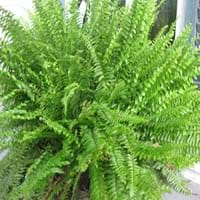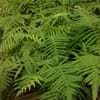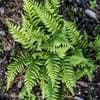Life Span
Perennial
Perennial
Origin
Northeastern United States, North-Central United States, Western United States, Canada
Mexico, Central America, South America, Brazil, Africa, Middle Africa, Polynesia
Types
Bigleaf hydrangea, Hortensia, Smooth hydrangea, Oakleaf hydrangea, Annabelle
Nephrolepis biserrata, Nephrolepis cordifolia, Nephrolepis multiflora
Habitat
Forest edges, Hillside, Woods
Forests, Humid climates, Swamps
USDA Hardiness Zone
3-8
10-15
Sunset Zone
A3, 1a, 1b, 2a, 2b, 3a, 3b, 4, 5, 6, 7, 14, 15, 16, 17
H1, H2, 23, 24
Habit
Clump-Forming
Clump-Forming
Flower Color
Blue, Dark Purple, Light Purple, Red, White
Not Available
Flower Color Modifier
Bicolor
Bicolor
Fruit Color
Not Available
Not Available
Leaf Color in Spring
Green
Green
Leaf Color in Summer
Green
Green
Leaf Color in Fall
Green
Green
Leaf Color in Winter
Light Green
Green
Leaf Shape
Oblovate
Irregular
Plant Season
Spring, Summer, Fall
Spring, Summer, Fall, Winter
Sunlight
Partial shade, Full Shade
Full Shade, Partial shade
The pH of Soil
Acidic
Acidic, Neutral
Soil Drainage
Well drained
Average
Bloom Time
Spring, Summer
Not Available
Tolerances
Drought
Not Available
Where to Plant?
Container, Ground
Container, Ground, Pot
How to Plant?
Seedlings, Stem Planting
Divison
Plant Maintenance
Medium
Medium
Watering Requirements
Not Available
Average Water Needs, Requires regular watering
In Summer
Average Water
Lots of watering
In Spring
Moderate
Moderate
In Winter
Average Water
Average Water
Soil pH
Acidic
Acidic, Neutral
Soil Drainage Capacity
Well drained
Average
Sun Exposure
Partial shade, Full Shade
Full Shade, Partial shade
Pruning
Remove damaged leaves, Remove dead branches, Remove dead leaves
Remove damaged leaves, Remove dead leaves, Remove dead or diseased plant parts
Fertilizers
All-Purpose Liquid Fertilizer
All-Purpose Liquid Fertilizer
Pests and Diseases
Red blotch
Red blotch
Plant Tolerance
Drought
Not Available
Flower Petal Number
Single
Single
Foliage Texture
Fine
Medium
Foliage Sheen
Matte
Not Available
Attracts
Bees, Flies
Hummingbirds
Allergy
Chest tightness, Diarrhea, Dizziness, Nausea, Vomiting
Erythema, Periungual swelling, Scaling, Vesicles
Aesthetic Uses
Not Available
Hanging Basket, Showy Purposes
Beauty Benefits
Not Available
Not Available
Edible Uses
Not Available
Insignificant
Environmental Uses
Air purification
Air purification, Indoor Air Purification
Medicinal Uses
Fever, Kidney problems, Urinary tract problems
Not Available
Part of Plant Used
Flowers, Root
Not Available
Other Uses
Not Available
Air freshner, Used as Ornamental plant
Used As Indoor Plant
Not Available
Yes
Used As Outdoor Plant
Yes
Yes
Garden Design
Feature Plant, Mixed Border, Wildflower
Container, Edging, Foundation, Hanging Basket, Mixed Border, Tropical
Botanical Name
ADIANTUM pedatum
NEPHROLEPIS exaltata 'Bostoniensis'
Common Name
Maidenhair Fern
Boston swordfern, Wild Boston fern, Tuber ladder fern, Fishbone fern
In Hindi
Hydrangea
बोस्टन फर्न
पौधा
In German
Hortensie
Boston Fern
Pflanze
In French
Hortensia
Boston Fern
Plante
In Spanish
Hortensia
helecho de Boston
Planta
In Greek
υδραγεία
Βοστώνη Fern
Φυτό
In Portuguese
Hortênsia
Boston Fern
Plantar
In Polish
Hortensja
Boston paproci
Roślina
In Latin
Hibiscus
Boston Fern
planta
Phylum
Not Available
Pteridophyta
Class
Not Available
Filicopsida
Order
Not Available
Polypodiales
Family
Pteridaceae
Dryopteridaceae
Genus
Not Available
Nephrolepis Schott
Clade
Not Available
Not Available
Tribe
Not Available
Not Available
Subfamily
Not Available
Not Available
Number of Species
Not Available
Properties of Maidenhair Fern and Boston Fern
Wondering what are the properties of Maidenhair Fern and Boston Fern? We provide you with everything About Maidenhair Fern and Boston Fern. Maidenhair Fern doesn't have thorns and Boston Fern doesn't have thorns. Also Maidenhair Fern does not have fragrant flowers. Maidenhair Fern has allergic reactions like Chest tightness, Diarrhea, Dizziness, Nausea and Vomiting and Boston Fern has allergic reactions like Chest tightness, Diarrhea, Dizziness, Nausea and Vomiting. Compare all the properties and characteristics of these two plants. Find out which of these plant can be used as indoor plant. If you are interested to decorate your house and garden, find out aesthetic uses, compare them and select the plant which will beautify your surrounding. Along with beautification, try comparing medicinal and edible uses of Maidenhair Fern and Boston Fern and you can choose the plant having best and most benefits.
Season and Care of Maidenhair Fern and Boston Fern
Season and care of Maidenhair Fern and Boston Fern is important to know. While considering everything about Maidenhair Fern and Boston Fern Care, growing season is an essential factor. Maidenhair Fern season is Spring, Summer and Fall and Boston Fern season is Spring, Summer and Fall. The type of soil for Maidenhair Fern is Loam and for Boston Fern is Loam while the PH of soil for Maidenhair Fern is Acidic and for Boston Fern is Acidic, Neutral.
Maidenhair Fern and Boston Fern Physical Information
Maidenhair Fern and Boston Fern physical information is very important for comparison. Maidenhair Fern height is 6.56 cm and width 10.50 cm whereas Boston Fern height is 90.00 cm and width 180.00 cm. The color specification of Maidenhair Fern and Boston Fern are as follows:
Maidenhair Fern flower color: Blue, Dark Purple, Light Purple, Red and White
Maidenhair Fern leaf color: Green
Boston Fern flower color: Not Available
- Boston Fern leaf color: Green
Care of Maidenhair Fern and Boston Fern
Care of Maidenhair Fern and Boston Fern include pruning, fertilizers, watering etc. Maidenhair Fern pruning is done Remove damaged leaves, Remove dead branches and Remove dead leaves and Boston Fern pruning is done Remove damaged leaves, Remove dead leaves and Remove dead or diseased plant parts. In summer Maidenhair Fern needs Average Water and in winter, it needs Average Water. Whereas, in summer Boston Fern needs Lots of watering and in winter, it needs Average Water.



